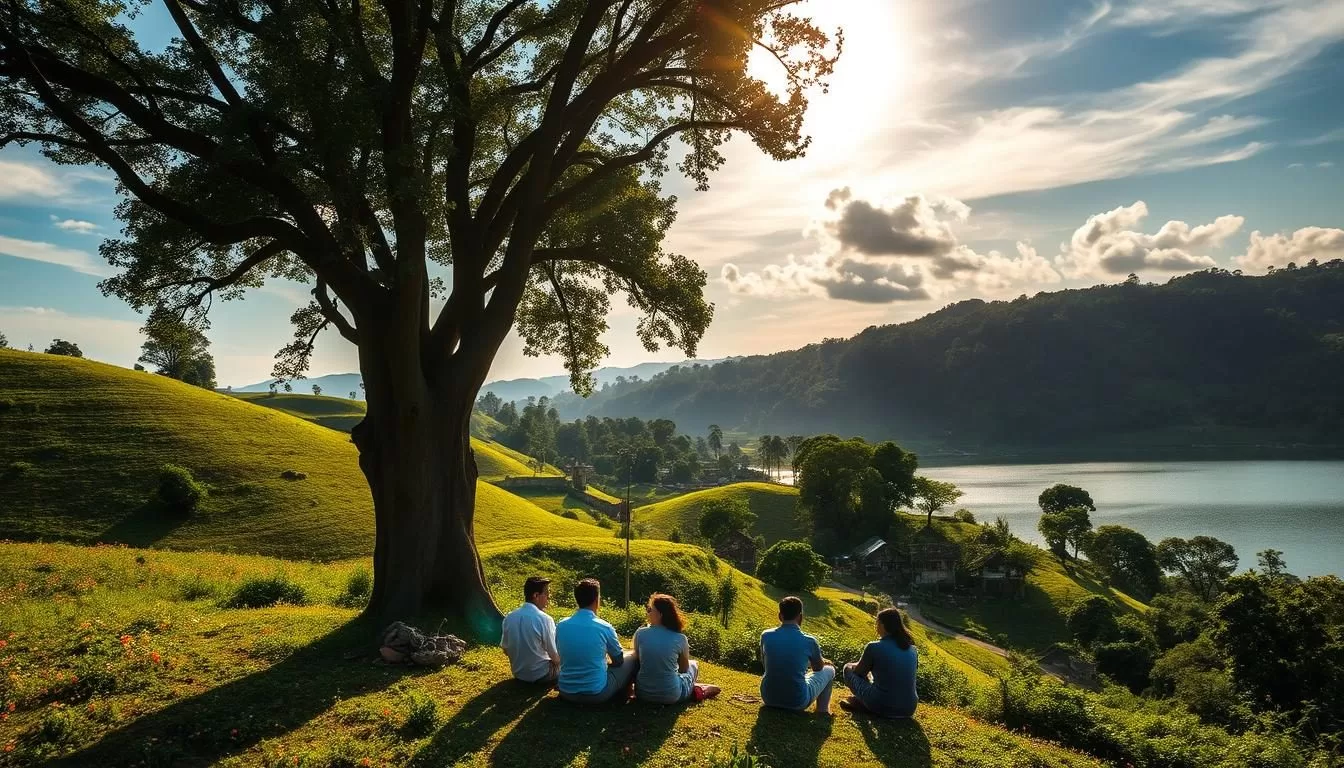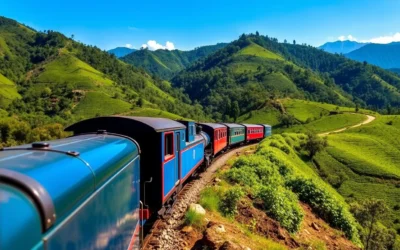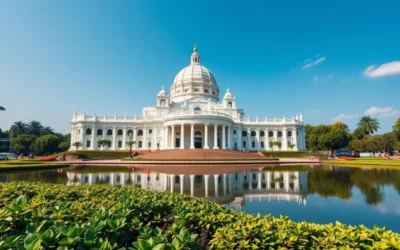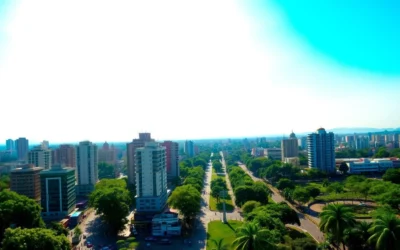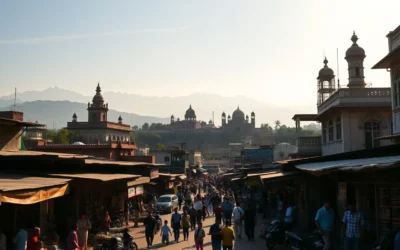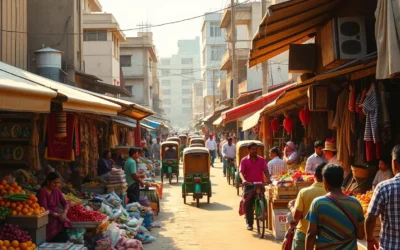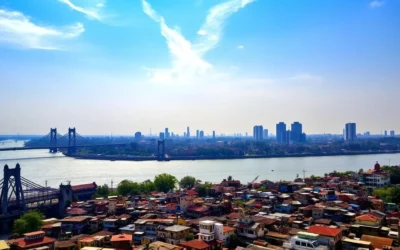✓ Accommodations✓ Flights✓ Rental Cars
Planning a trip to a destination with diverse climate patterns can be challenging. You’ll want to know the best time to visit and make the most of your travel experiences.
The state of West Bengal offers a range of seasonal experiences throughout the year, from the Himalayan foothills to coastal areas. Understanding the local climate is crucial to a successful trip. The period between October and March is generally considered ideal, with warm, sunny, and dry weather prevailing across most regions.
As you plan your weather-savvy trip, you’ll discover the unique advantages and challenges of each season. This guide will help you make informed decisions about when to visit based on your preferences for activities, festivals, and comfort levels.
Understanding West Bengal’s Climate
Understanding the climate of West Bengal requires a look into its geographical diversity and the resultant weather patterns. The state’s unique geography creates diverse climate zones, ranging from the Himalayan region in the north to the coastal plains in the south.
Geographical Influences on Weather Patterns
West Bengal’s climate is significantly influenced by its geography. The Himalayan mountain range in the north creates a distinct microclimate, while the Bay of Bengal plays a crucial role in shaping the state’s weather patterns, particularly during the monsoon season. The varied topography results in different climate conditions across the state, making it a fascinating place to explore.
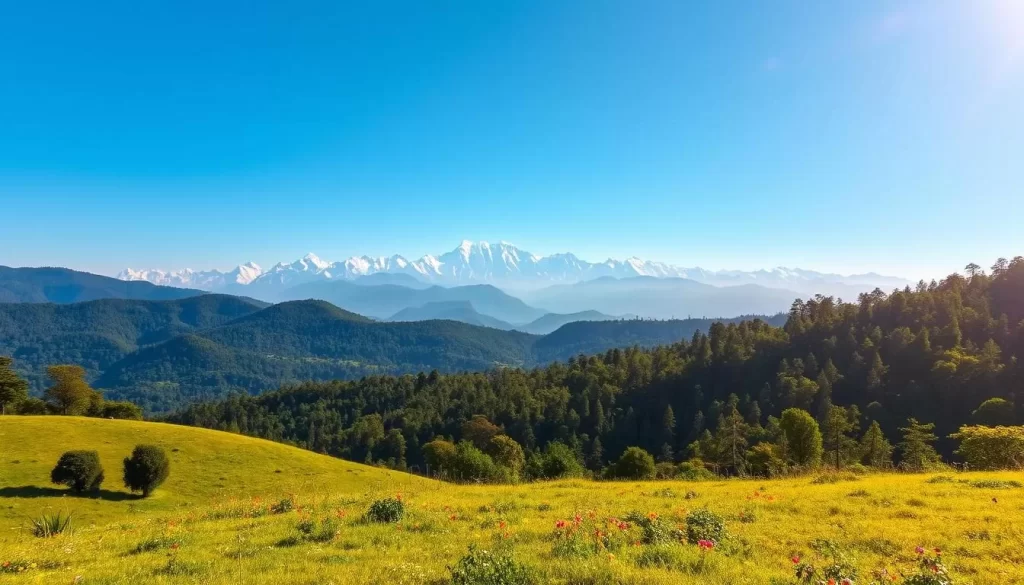
The Four Distinct Seasons of West Bengal
West Bengal experiences four distinct seasons: winter (November-February), summer (March-May), monsoon (June-September), and autumn (October-November). Each season transforms the landscape and atmosphere of West Bengal, from the lush greenery of the monsoon to the clear skies of winter. The temperatures and weather conditions vary significantly across these seasons, providing a diverse range of experiences for visitors.
By understanding these seasonal variations and the geographical influences on West Bengal’s climate, you can better plan your trip to this beautiful Indian state.
West Bengal, India: Best Months for a Weather-Savvy Trip
If you’re planning to visit West Bengal, knowing the best months for a weather-savvy trip can make all the difference in your travel experience. The period from October to March is widely regarded as the ideal time to explore this Indian state.
October to March: The Golden Period
The months from October to March offer a unique blend of comfortable weather and exciting cultural experiences. During October and November, the post-monsoon landscape is lush and green, and the skies clear up just in time for the festive season. As the winter months set in from December to February, the daytime temperatures are pleasant, typically ranging from 20-30°C (68-86°F), while the evenings are cool, making it perfect for sightseeing and exploring both the northern hill stations and southern coastal areas.
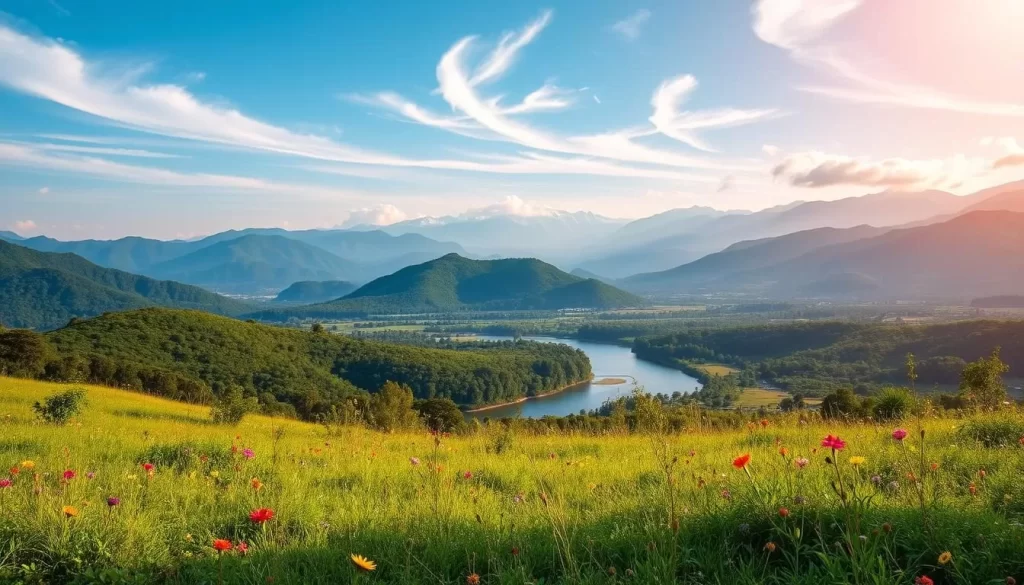
Why Weather-Conscious Travelers Prefer Winter Months
Weather-conscious travelers prefer the winter months (November to February) for visiting West Bengal because of the comfortable temperatures, low humidity, and clear skies, which are ideal for sightseeing and photography. The dry season, which spans from December to March, ensures that the weather remains sunny and rain-free, making it perfect for exploring outdoor attractions, wildlife sanctuaries, and cultural sites. Additionally, traveling during these optimal months allows you to balance ideal weather with budget considerations, as prices tend to be more reasonable.
By choosing to visit West Bengal during the winter months, you’ll be able to enjoy a more relaxed pace, take in the natural beauty of the region, and experience the local culture without the harsh weather conditions that can be a deterrent during other times of the year.
Season-by-Season Weather Guide
West Bengal’s weather is characterized by four distinct seasons, each offering a unique experience for travelers. Understanding these seasonal variations is key to planning a memorable trip.
Winter (November-February): Pleasant Days and Cool Nights
During winter, West Bengal enjoys pleasant days with average temperatures ranging from 20-25°C (68-77°F) and cool nights between 10-15°C (50-59°F). This makes it an ideal time for outdoor activities and sightseeing, particularly in cities like Kolkata and the hill stations.
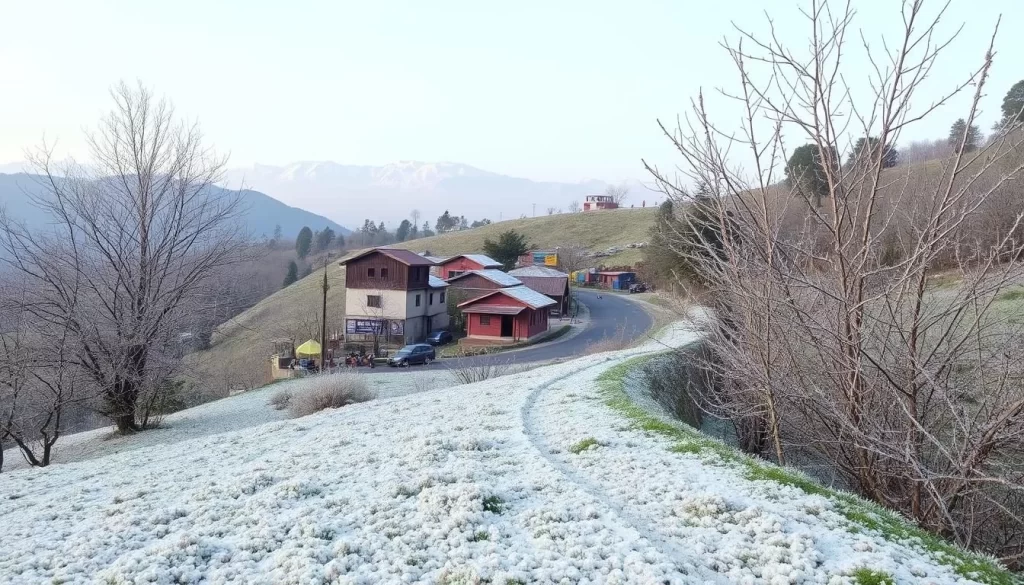
Summer (March-May): Rising Heat and Humidity
Summer brings rising heat and humidity to West Bengal, with temperatures often exceeding 35°C (95°F) in Kolkata and southern regions. While it’s a challenging time to explore, the hill stations offer a cooler respite.
Monsoon (June-September): Heavy Rainfall and Lush Landscapes
The monsoon season transforms West Bengal with heavy rainfall, resulting in lush landscapes. However, this period can be challenging for travel due to the weather conditions, especially in areas like the Sundarbans.
Autumn (October-November): Clear Skies and Comfortable Temperatures
Autumn brings clear skies and comfortable temperatures to West Bengal, making it an attractive time to visit. The post-monsoon period offers a serene landscape before the onset of winter, ideal for exploring the state’s diverse attractions.
By understanding the characteristics of each season, you can plan your trip to West Bengal according to your preferences, ensuring a memorable travel experience.
Top Destinations in West Bengal by Season
West Bengal, a state in eastern India, is a treasure trove of diverse experiences, with each season unlocking a new facet of its beauty. The state’s varied climate and geography offer a range of exciting destinations to explore throughout the year.
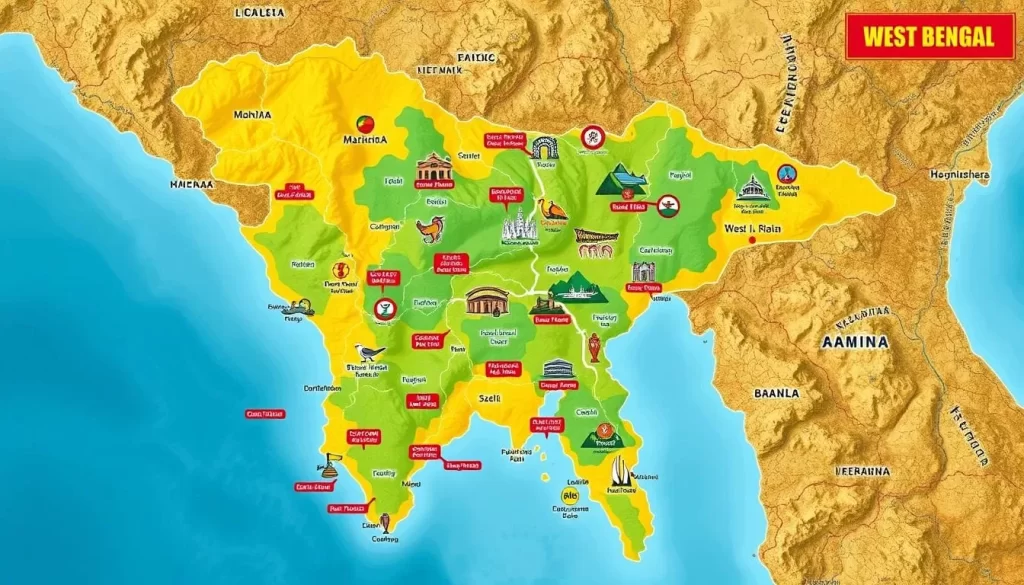
Winter Highlights: Kolkata, Sundarbans, and Darjeeling
Winter is an ideal time to visit West Bengal, with pleasant weather conditions making it perfect for sightseeing. Kolkata is a great place to start, with its heritage walks and cultural attractions. The Sundarbans National Park is another must-visit destination, offering opportunities for wildlife spotting and exploring the mangrove forests. For those who love the mountains, Darjeeling is a great escape, with its crisp mountain air and spectacular Himalayan views.
Summer Escapes: Hill Stations and Mountain Retreats
As the summer months approach, the plains of West Bengal can become quite hot. However, the hill stations in the north offer a cool respite. Darjeeling, Kalimpong, and Kurseong are popular hill stations that provide a welcome escape from the heat. These destinations offer opportunities for trekking, hiking, and exploring the natural beauty of the Himalayas.
Monsoon Magic: Where to Go When It Rains
The monsoon season brings a unique charm to West Bengal, with the rain transforming the landscape into a lush green paradise. Dooars is a great destination during this time, with its gushing waterfalls and lush forests. Certain areas of the Sundarbans also become more accessible, offering improved opportunities for wildlife viewing.
Cultural Festivals and Weather Considerations
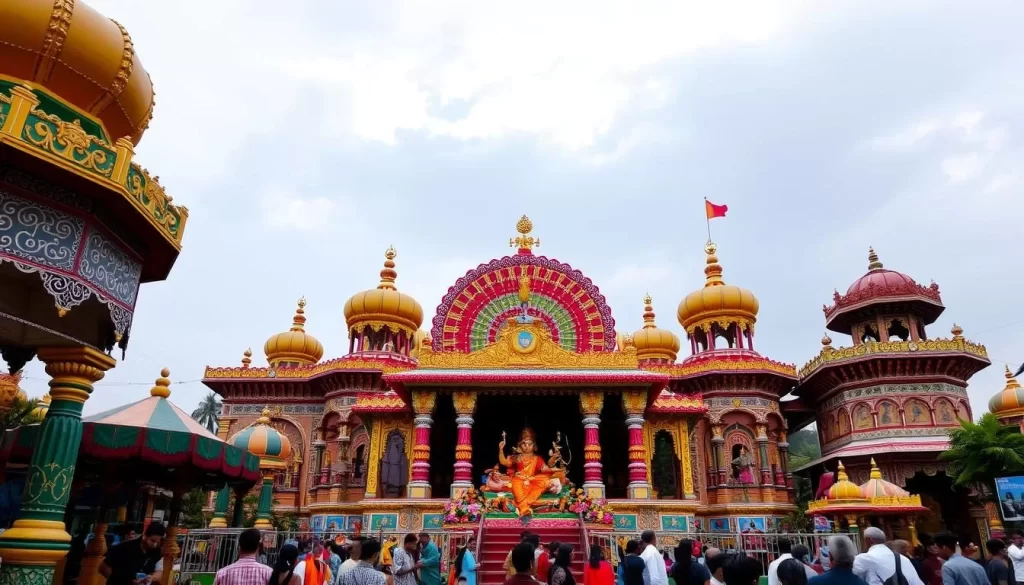
West Bengal’s festivals are not just celebrations, but also a reflection of how the region’s weather shapes the cultural experiences throughout the year. The state’s rich cultural heritage is showcased through its numerous festivals, which are often tied to the seasonal weather.
Durga Puja: The Autumn Celebration
Durga Puja, West Bengal’s most important festival, is celebrated in autumn, usually in October. The post-monsoon weather creates perfect conditions for the elaborate outdoor pandals and processions. You can experience the grandeur of Durga Puja by visiting Kolkata, where the streets come alive with lights and festivities.
Winter Festivals: Poush Mela and Christmas in Kolkata
Winter is a great time to visit India, with pleasant weather making it ideal for outdoor celebrations. Poush Mela in Shantiniketan and Christmas in Kolkata are highlights of the winter festival season. You can enjoy the lights and festivities, and experience the local culture firsthand.
Spring and Summer Celebrations
As spring turns into summer, West Bengal continues to celebrate various festivals. Holi in March and Rabindra Jayanti in May are significant events, offering unique cultural experiences. Although the heat increases, these celebrations provide a refreshing insight into the local culture.
Understanding how weather conditions impact festival celebrations can enhance your travel experience. From the elaborate lighting displays during winter festivals to the more subdued events during the rainy season, each festival has its unique charm.
Practical Travel Tips for Weather-Savvy Visitors
To make the most of your visit to West Bengal, it’s essential to be prepared for the varying weather conditions. Whether you’re exploring the cities or venturing into the wilderness, understanding the practical aspects of traveling through its diverse climate is crucial.
What to Pack for Each Season
Packing the right clothing is key to a comfortable trip. For summer, lightweight, breathable clothing is a must, while winter requires layers for the chilly evenings, especially in the northern regions. During the monsoon, waterproof gear and quick-drying clothes are essential.
| Season | Clothing | Accessories |
|---|---|---|
| Summer | Lightweight, breathable | Sunscreen, hat |
| Winter | Layers | Warm coat, gloves |
| Monsoon | Waterproof, quick-drying | Umbrella, rain boots |
Transportation Considerations During Monsoon
During the monsoon, certain routes may be affected by heavy rains, leading to potential delays. It’s advisable to check the weather forecast before traveling and consider alternative transportation options. Some regions may require 4×4 vehicles or boats due to flooding.
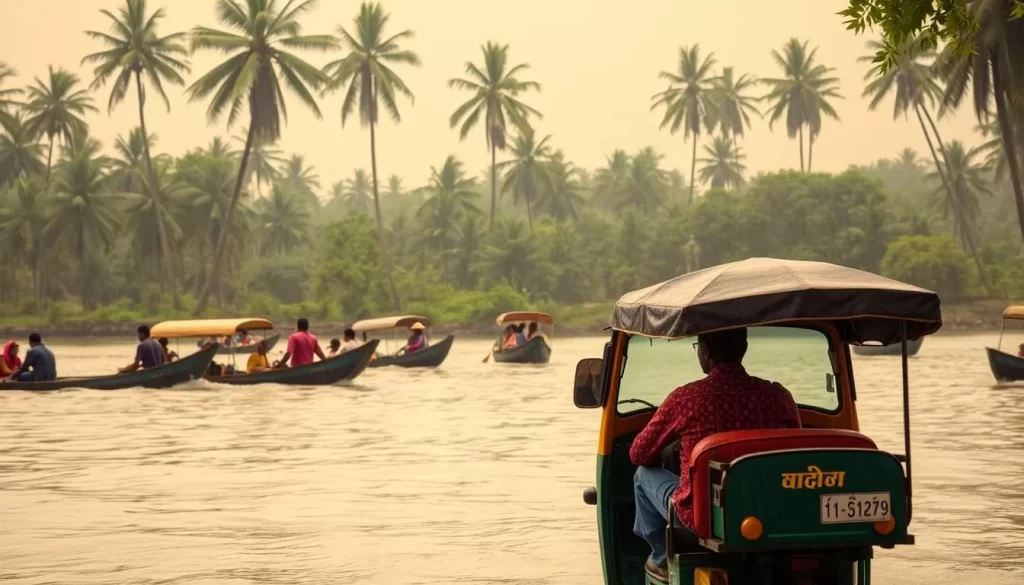
Health and Safety Weather Precautions
Different weather conditions pose various health risks. During summer, protecting yourself from heat-related illnesses is crucial, while during monsoon, being aware of waterborne diseases is essential. Always stay hydrated and take necessary precautions.
By being prepared and understanding the weather conditions, you can have a safe and enjoyable trip to West Bengal.
Conclusion: Planning Your Perfect West Bengal Trip
The best time to visit West Bengal depends on your travel preferences and interests. Generally, the period from October to March offers the most pleasant weather conditions for most travelers.
To make the most of your trip, align your travel dates with your specific interests, whether that’s experiencing festivals, wildlife viewing, or outdoor adventures. West Bengal’s diverse geography allows for year-round travel if you’re willing to adjust your destinations based on seasonal conditions.
The above is subject to change.
Check back often to TRAVEL.COM for the latest travel tips and deals.
